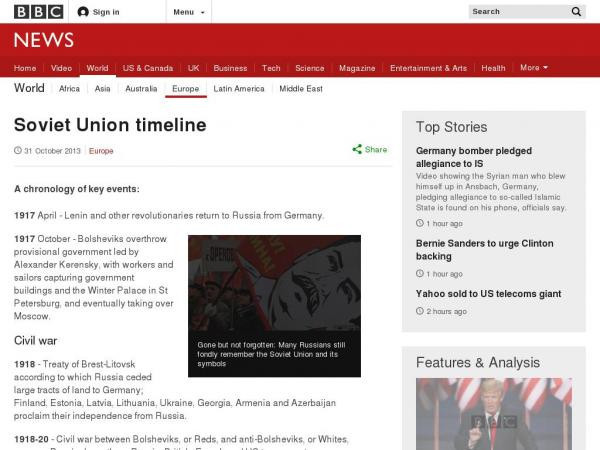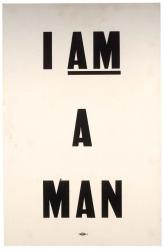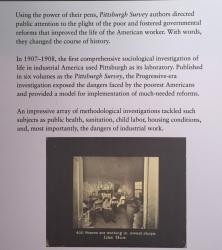Kate Harris
Social Studies teacher
Pittsburgh CAPA
Middle School (13 to 15 years old), High School (16 to 18 years old)
Teacher/Educator
Language Arts And English, Civics, Literature, Cultures, Economics, Social Studies, Geography, Writing, US History, Arts, Other
I'm a history-lover, art fan, and bookworm. I taught high school history (U.S. History and World Religions) for ten years in North Carolina, teach currently in Pittsburgh, PA, and am working to help teachers make the most of this new resource!
Kate Harris's collections
Art in American History--ISTE Conference 2016
A collection of resources used for a mini-session at the ISTE Conference 2016. Includes strategies and resources for integrating art into an American History course, utilizing Harvard University & Project Zero's "Making Thinking Visible."
 Kate Harris
Kate Harris
11
Investigating a Place: North Carolina
What defines a place? This teacher's guide uses stamps, photographs, paintings, objects, videos, and music to explore the history and culture of North Carolina. In the classroom, these resources can be used by students to investigate two essential questions: How do you define North Carolina as a place? What does it mean to be from North Carolina?
Further questions include:
How do these objects relate to each other? What objects/people/places are missing that you think are important in defining North Carolina as a place? What sub-themes can you identify within this collection of resources? How do you define North Carolina in terms of its environmental characteristics? What are its unique set of physical and cultural conditions? Has the definition of being from North Carolina changed over time?
Activity Idea:
Ask students to investigate collection in small groups to answer the two essential questions. Use the supporting questions to guide their inquiry into the essential questions - answering these questions will give students a knowledge and evidence base from which to answer the essential questions.
To further the activity, students may choose one resource to investigate in depth and either write an essay or create a collection of their own around it. Students may choose two or more resources to compare in their exploration of how one defines North Carolina.
Ask students individually or in small groups to create a collection in Learning Lab to represent the physical and cultural characteristics of another place. Using these collections, ask students to write summary statements describing the unique human and physical characteristics of places researched. In class discuss student collections and what makes each place unique.
 Kate Harris
Kate Harris
44
The Olympics and the Cold War
This learner resource includes artifacts and archival documents regarding the 1980, 1984, and 1988 Olympics. Students will explore these materials in order to develop an understanding of how the Olympics were used as a platform for the United States and the Soviet Union to display political ideals during the Cold War. Comprehension and analysis questions are embedded throughout.
Tags: Wilson Center, Cold War, Olympics, hockey, Miracle on Ice, boycott, Afghanistan, Soviet Union, USSR, Communism
 Kate Harris
Kate Harris
10
National Parks
This topical collection focuses on the establishment of a national parks system in the United States. Items in the collection can be used to address the following questions:
-What is the difference between "conservation" and "preservation"? Which view towards nature seems to influence our national parks system today?
-In United States history, there is often a tension between progress and protection, or change and tradition. How is that tension reflected in the story of the national parks system? Consider the economic demands of a growing nation and the impulse to make the natural world accessible to all members of U.S. society.
Tags: Parks, environment, conservation, preservation, Muir, Sierra Club, Roosevelt
 Kate Harris
Kate Harris
19
The End of the Cold War
This teaching collection chronicles the events and people associated with the end of the Cold War. Suggested teaching strategies are embedded throughout.
Guiding questions include:
-Who started the "revolutions" of 1989--Gorbachev and his reforms? People in Eastern Europe?
-Evaluate the roles of the United States and the Reagan and Bush administrations, as well as the changes within the Soviet Union, in bringing about the end of the Cold War.
-Why did the Cold War end?
-What were the costs of the Cold War, both human and material?
-What are the legacies/lessons of the Cold War?
-What uncertainties or questions remained as the Cold War came to a close? What would come to characterize the 'New World Order' that followed?
Tags: Wilson Center, Cold War, Reagan, Gorbachev, glasnost, perestroika, revolution, Soviet Union, USSR, Communism
 Kate Harris
Kate Harris
21
Political Campaigns
How have political campaign strategies evolved over time? Use this collection of a variety of resources (artifact, poster, photograph, news article, video, and painting) to find an answer to the question. As you review the collection, take notes on the variety of issues, audiences, and tactics you see represented.
Tags: politics, campaign, election, vote, ballot box, Kennedy, Nixon, 1960, Obama, 2008, 1956, Eisenhower, Ike, Nixon, Harding, Republican, Democrat, suffrage, Lincoln, 1860
 Kate Harris
Kate Harris
6
I Am a Man--We Are Human
This collection traces how a powerful phrase and its variations have been adopted by different voices in United States history.
Questions to consider:
-How is the phrase (and/or design of the original poster) used? How do the changes and adaptations it has undergone reflect different time periods and issues in United States history?
-Why has the phrase "I am a Man" had such staying power? Alternately, why has "We Are Human" been adopted?
-How do the above phrases reflect or reject concepts like "separateness," "personal identity," or "inclusion"?
-Why do you think many artists are drawn to the phrase and design? Do you think the artists expect viewers to recognize the influence of the original work? Why or why not?
-Why is the verb underlined? How would it change if another word were emphasized?
-What other examples could be included in this collection? This collection focuses primarily on visual interpretations of the phrase. Can you think of literary or pop culture examples?
Tags: Ernest Withers, Dread Scott, Ferguson, Abolition, Sojourner Truth, Memphis, sanitation workers, immigration reform, refugee crisis, Hank Willis Thomas, protest, sign, placard, broadside, civil rights
 Kate Harris
Kate Harris
9
Six Degrees of Separation: An APUSH Review Activity
Use this collection as a starting point for an AP United States History review activity that emphasizes connections and cause-and-effect. Students will copy the collection and add in four resources that form a chain of connection from one item to another (ending with six resources total). For each resource, they should add an annotation describing each of the events or items included, analyzing any important details in the resources themselves, and explaining how each connects to the next one.
 Kate Harris
Kate Harris
2
Six Degrees of Separation Example: Lincoln's Axe to William Jennings Bryan
<p>This is a finished version of the "Six Degrees of Separation" AP USH review activity, including annotations explaining the links between objects. This may be useful to share with students the first time you try the activity. Note that connections should be deeper than similarities or coincidental links; they should reflect a causal relationship. In addition, you might ask students to present some analysis of the resources they chose, identifying key details.</p>
<p>The original activity is available here: <a href="https://learninglab.si.edu/collections/six-degrees-of-separation-an-apush-review-activity/C1stNx2FioYNAkWP#r" target="_blank">https://learninglab.si.edu/collections/six-degrees-of-separation-an-apush-review-activity/C1stNx2FioYNAkWP#r</a><br /></p><p><em>#historicalthinking</em></p><p><br /></p>
 Kate Harris
Kate Harris
6
Dulce et Decorum Est--Poetry from World War I
<p>Why are artists' representations of war important? This student activity uses a poem by Wilfred Owen, "Dulce et Decorum Est," and several images to encourage reflection on soldiers' experiences and views of war. Students will explore the descriptive language and artistic choices made to determine what emotions are evoked by the art and what attitudes towards war are represented. Finally, students will be asked to consider and write about their own beliefs regarding war.</p>
 Kate Harris
Kate Harris
9
The End of World War I
This collection asks users to consider how unresolved issues from WWI may have led to the outbreak of war again in the 1930s. Included is a letter from a soldier on the end of the war, a summary of the Treaty of Versailles, a painting and a political cartoon.
The collection asks students to evaluate the predictions about future wars made by the letter's author and then to evaluate how and why the Treaty of Versailles may have failed.
Tags: World War I, Treaty of Versailles, League of Nations, armistice, interwar, World War I, Hitler
 Kate Harris
Kate Harris
5
The Pittsburgh Survey
<p>This topical collection contains resources related to the <a href="https://en.wikipedia.org/wiki/The_Pittsburgh_Survey" target="_blank">Pittsburgh Survey</a>, a groundbreaking Progressive Era research study of the living and working conditions in turn-of-the-century Pittsburgh. This study, published in books and magazines, led to the passage of worker-safety laws and encouraged other Progressive Era reforms. The images, readings, and links to archival materials in this collection can be used to support exploration of the questions below.</p><p>Guiding Questions:</p><ul><li>In what way did the Pittsburgh Survey reflect Progressive Era concerns, strategies, and achievements?</li><li>How did Progressive Era beliefs about social change differ from those held previously?</li></ul><p>Tags: Progressives, child labor, worker safety, scientific management, muckrakers, reform movement, Lewis Hine, Paul Kellogg, Crystal Eastman. Joseph Stella, Homestead, Pittsburgh, Pennsylvania</p>
 Kate Harris
Kate Harris
13










